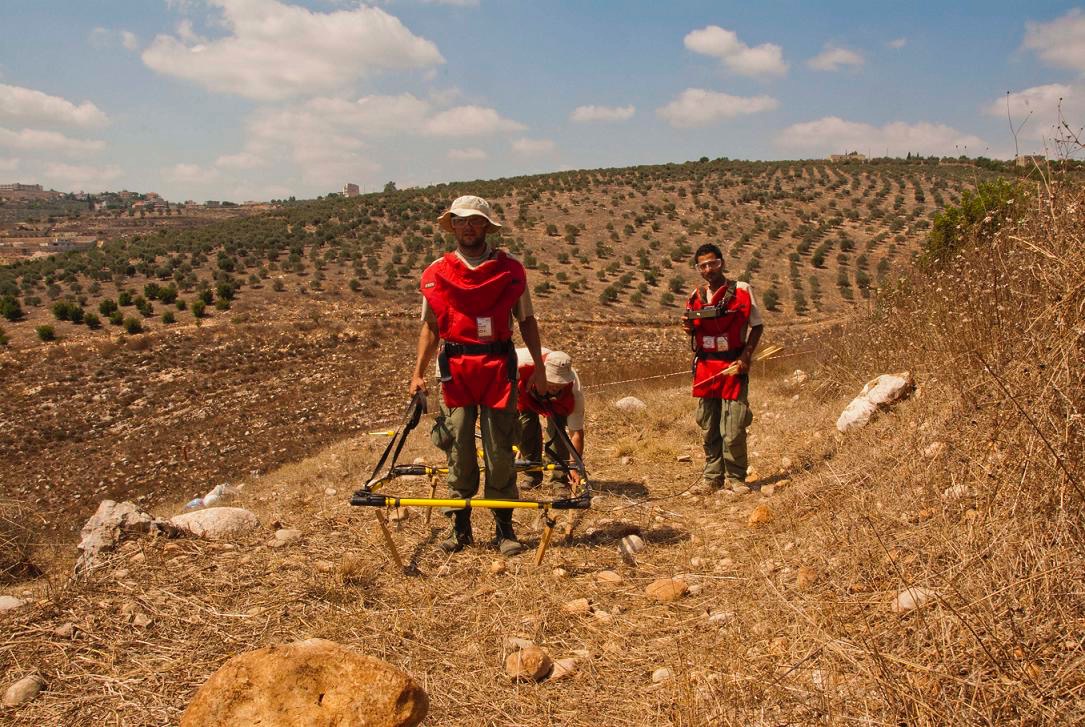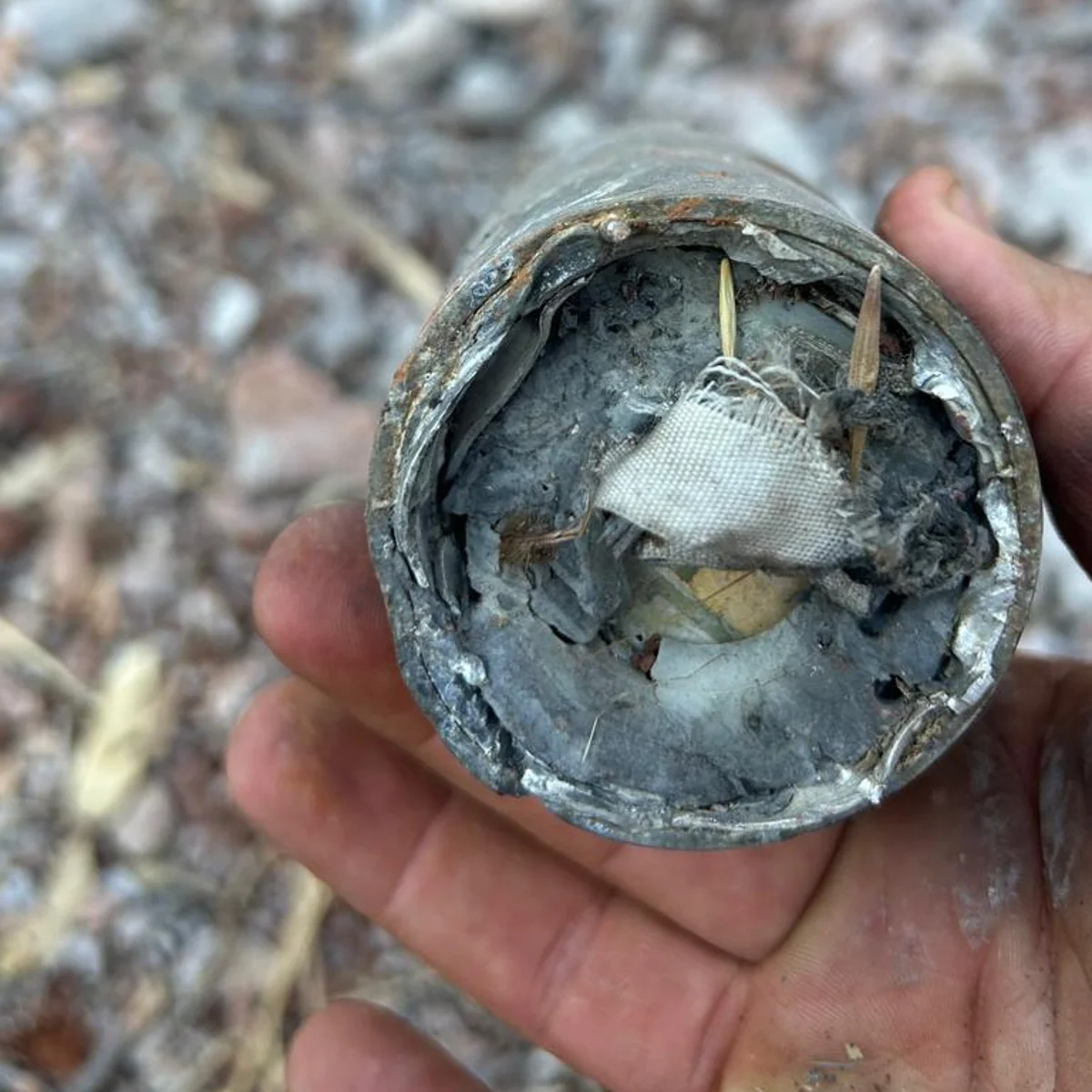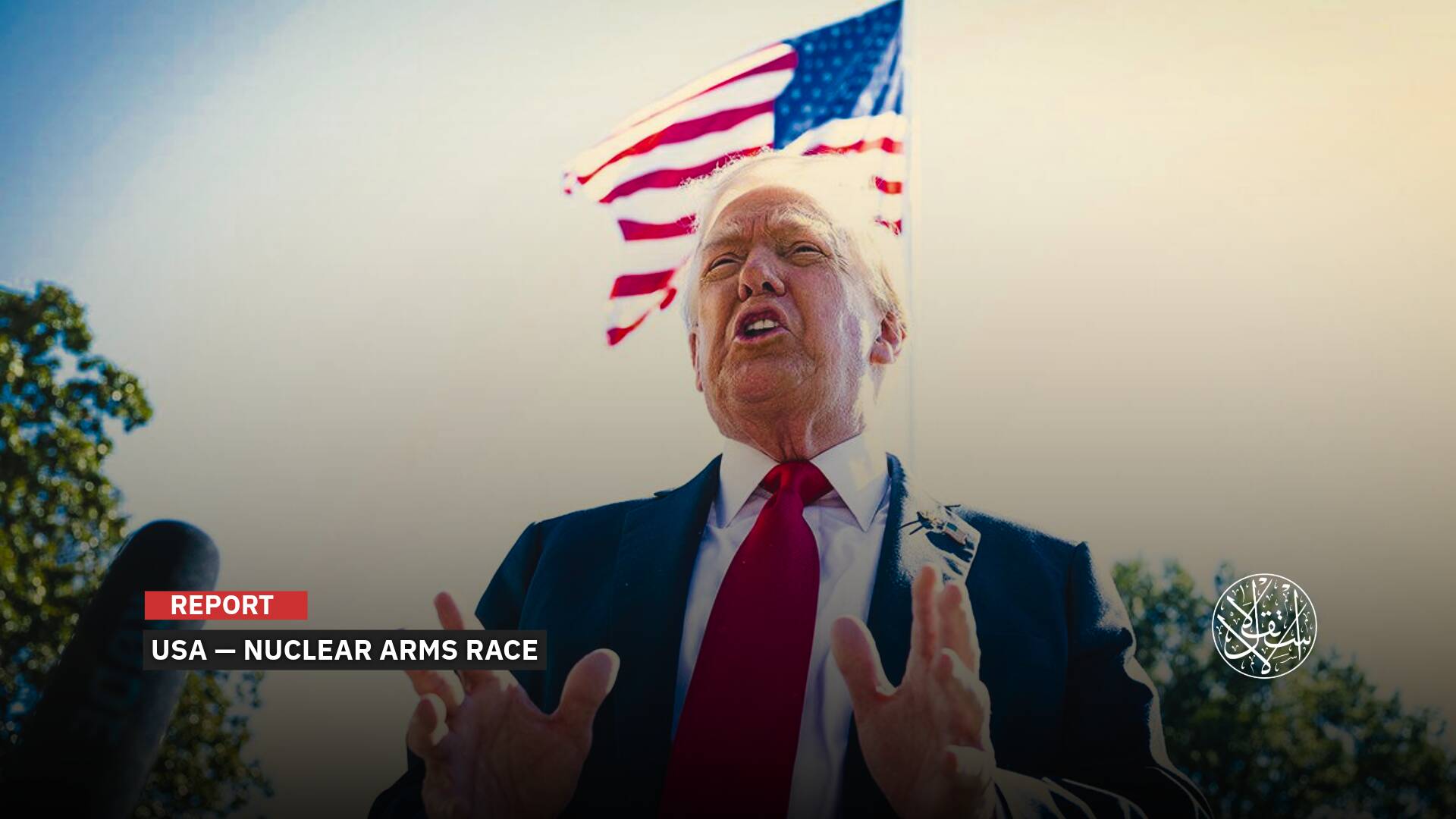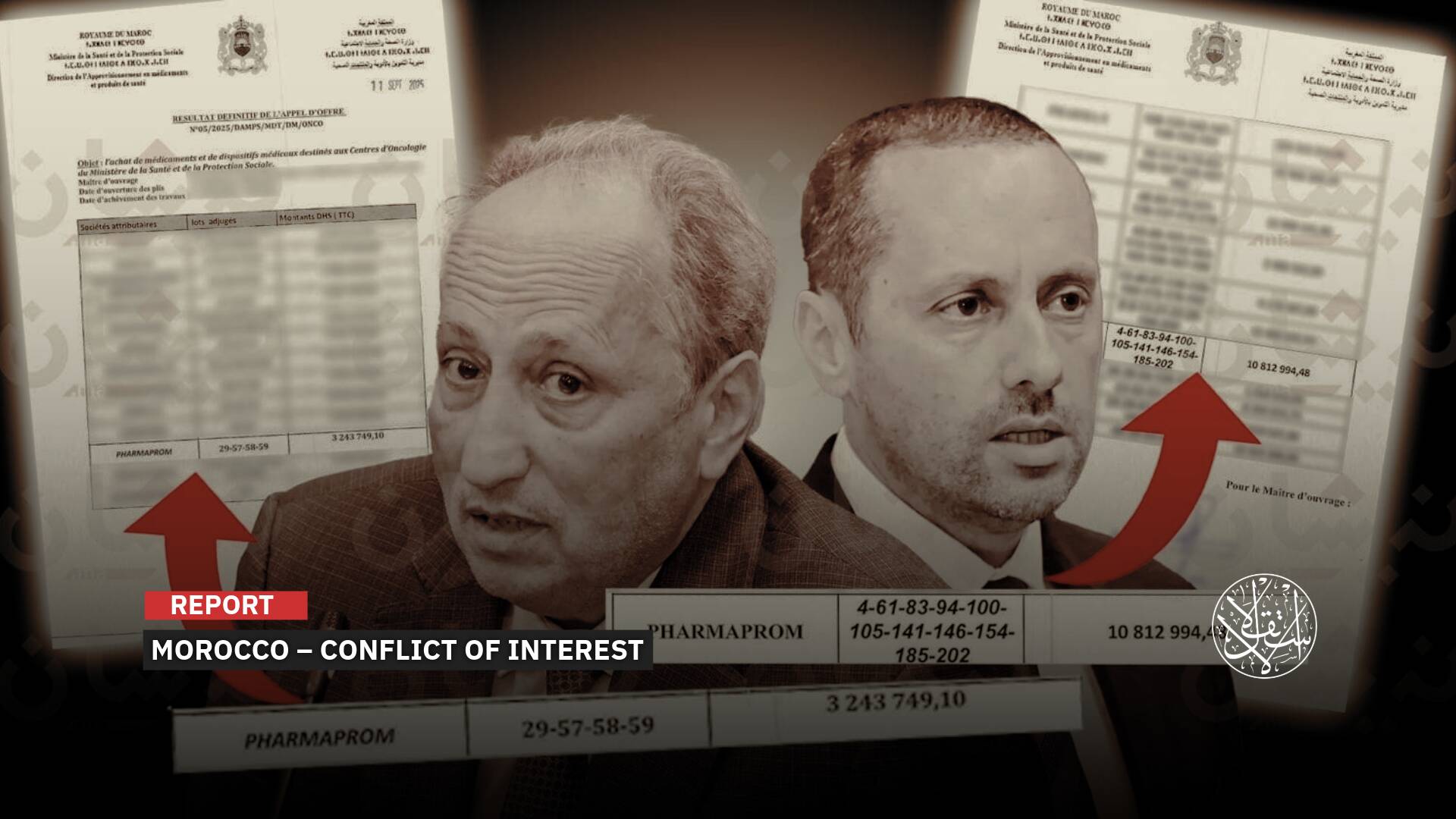Did Israeli Occupation Use Widely Banned Cluster Munitions in South Lebanon? New Evidence Reveals the Truth

Cluster munitions are container bombs that release many small bomblets over a wide area the size of several football fields.
Newly obtained images of munition remnants found in southern Lebanon reveal clear signs that “Israel” used internationally banned cluster bombs on a wide scale during its thirteen-month war on the country. The photos represent the first documented evidence of the Israeli Occupation army deploying this type of weapon in nearly twenty years.
The Guardian acquired the images exclusively and shared them with six arms experts for examination and analysis.
According to the investigation published on November 19, 2025, the experts confirmed that the remnants shown in the photos belong to two types of Israeli cluster bombs. They were found in three different locations: south of the Litani River in the forested valleys of Wadi Zibqin, Wadi Barghouz, and Wadi Deir Siryan.
Inevitable Death
This discovery serves as a stark warning of inevitable death— the first concrete evidence that the Israeli Occupation has resumed using cluster munitions since the 2006 war. Beyond that, it reveals that the two newly found types (the 155mm M999 Barak Eitan and 227mm Ra’am Eitan guided missiles) mark their first documented appearance on the battlefield.
According to the experts, cluster munitions work by releasing a large container packed with dozens of small bomblets that scatter across a wide area the size of several football fields. Between 10 and 40 percent fail to detonate on impact, turning the landscape into a minefield where each unexploded bomblet waits for someone to step too close.
Although the Convention on Cluster Munitions, adopted by 124 countries, bans the use, transfer, and stockpiling of such weapons, the Israeli Occupation is not a party to the treaty and does not adhere to its provisions.
Even so, international human rights organizations argue that the use of these weapons fundamentally violates the core principles of international humanitarian law, given their inherently indiscriminate nature, the impossibility of directing them precisely at military targets, and the long-term threat they pose to civilians long after the war ends.
Maiming Civilians
“We believe the use of cluster munitions is always in conflict with a military’s duty to respect international humanitarian law because of their indiscriminate nature at time of use and afterwards,” said Tamar Gabelnick, the director of the Cluster Munition Coalition. “Their wide area impact means they cannot distinguish between military and civilian targets and the cluster munition remnants kill and maim civilians for decades after use.”
The Israeli Occupation army neither confirmed nor denied using the weapon, saying that it “uses only lawful weapons, in accordance with international law and while mitigating harm to civilians.”
The Israeli war on Lebanon erupted in October 2023, killing roughly 4,000 people in Lebanon and nearly 120 in the Israeli Occupation. Despite a ceasefire signed last year, “Israel” continues near-daily strikes in southern Lebanon, which remains devastated.
Lebanon carries a painful legacy with cluster bombs: “Israel” saturated its territory with around four million of them in the final days of the 2006 war, and as many as one million failed to explode. Since then, more than 400 Lebanese civilians have been killed by unexploded ordnance—a humanitarian catastrophe that helped spur the creation of the Convention on Cluster Munitions in 2008.

Documented Evidence
Although “Israel” is not a party to the Convention on Cluster Munitions, it was among the first to condemn Iran’s use of such weapons during its response to the Israeli war on June 13, 2025. Israeli army spokesperson Brigadier General Effie Defrin said at the time that “the terror regime seeks to harm civilians and even used weapons with wide dispersal in order to maximize the scope of the damage.”
Back on the ground, arms experts were able to verify that the first set of remnants belonged to the M999 Barak Eitan shell, manufactured by Elbit Systems in 2019. Each shell releases nine submunitions that explode into roughly 1,200 tungsten shards, according to a U.S. army primer on the weapon. Tungsten is one of the hardest known metals, and its properties cause it to shatter into sharp, deadly shards upon detonation.
Other images showed debris from a cluster munition that most experts could not identify with certainty due to limited information. Two specialists, however, concluded that the shards were from the Ra’am Eitan guided missile developed in 2017. Israeli media have reported that this rocket carries sixty-four submunitions that spread in a wide circle, killing anyone within range.
According to an Israeli army statement from February 2024, forces stationed along the northern border had been supplied with this type of munition in anticipation of a possible confrontation with Hezbollah. Israeli reports claim the weapon was designed to reduce the rate of unexploded bomblets, claiming that the failure rate for the Ra’am Eitan rocket does not exceed 0.01 percent.
Weapons experts strongly doubt these figures, noting that failure rates announced by defense companies are often far below reality. They cite what happened in 2006, when “Israel’s” military industry claimed that the M85 bomblet had a failure rate of only 0.06 percent, while later studies showed the real rate was closer to ten percent.
Human rights groups have said that it is impossible for cluster munitions to be used in a way that minimizes harm to civilians and that efforts to present newer models as safer or more precise are simply attempts to obscure their inherently indiscriminate nature.
“Cluster munitions are banned internationally for a reason. They are inherently indiscriminate and there is no way to employ them lawfully or responsibly, and civilians bear the brunt of the risk as these weapons stay deadly for decades to come,” said Brian Castner, the head of crisis research at Amnesty International.

The Damage Runs Deep
A detailed report published by Human Rights Watch on February 6, 2025, found that the extensive contamination left behind by cluster munitions has had brutal social and economic consequences for farming communities in southern Lebanon. Estimates suggest that hundreds of thousands, and possibly up to a million, unexploded submunitions remain scattered across fields and villages, destabilizing a local economy built almost entirely on agriculture.
According to the report, the United Nations Development Program estimated that roughly twenty square kilometers of farmland have been contaminated, while the Food and Agriculture Organization calculated that cluster munitions struck about twenty-six percent of the agricultural land in the south. The Lebanon Mine Action Center described that estimate as “highly conservative.”
The report notes that the contamination has not only denied men and women safe access to their fields but has also kept many from entering their own homes, gardens, and orchards. Chris Clark, program manager at the UN Mine Action Coordination Center of South Lebanon, said it is no exaggeration to say that everything has been affected, pointing out that about seventy percent of household income in the region depends directly on agriculture.
Clark added that the submunitions buried beneath the soil after the attacks have left thousands of farmers unable to harvest their crops or replant their land, forcing many to lose their primary source of income.
Habbouba Aoun, coordinator at the Landmines Resource Center for Lebanon, said farmers are now facing an existential crisis. They need support more than ever, as many can no longer secure even the most basic resources to survive.

Cluster Munitions
Cluster bombs were first used on a large scale during World War II before becoming a staple of twentieth-century warfare. Their use reached its peak in the Vietnam War, when the United States dropped an estimated 260 million bomblets over Laos, leaving behind massive contamination and destruction that remain visible today.
Handicap International notes that these weapons effectively become long-lasting death traps, capable of staying active for decades and rendering affected land uninhabitable and unusable for farming. The impact is starkly visible in parts of Laos that continue to suffer from the legacy of American bombing more than half a century later and in Lebanon, which was heavily hit by cluster munitions during the 2006 war.
Civilians bear the brunt of this weapon. Data from Handicap International for 2022 shows that ninety-seven percent of cluster munition casualties are civilians and that children make up sixty-six percent of those killed or injured.
Despite growing international consensus against the use of cluster munitions, several states continue to deploy them, including Russia, Ukraine, and the Israeli occupation.
On the production side, the latest research from 2022 indicates that sixteen countries manufacture or plan to manufacture cluster munitions. They include Egypt, Brazil, China, Greece, India, Iran, “Israel,” North Korea, Pakistan, Poland, Romania, Russia, Singapore, South Korea, Turkiye, and the United States. Their continued involvement underscores the persistence of this weapon despite broad global condemnation of its risks and devastating effects.
Sources
- Israel used widely banned cluster munitions in Lebanon, photos of remnants suggest
- Trump to decide on US role in Israel-Iran conflict within 2 weeks
- Armaments & Ammunition
- Southern Lebanon Flooded with Cluster Munitions [Arabic]
- Cluster Munitions: Deadly, Banned, and Still in Use! [Arabic]
- Cluster Bombs and Mines: 'Inevitable Death’ Looms Over Lebanese Civilians [Arabic]
- Global Report Tracks Major Progress in Clearing Cluster Munitions [Arabic]










